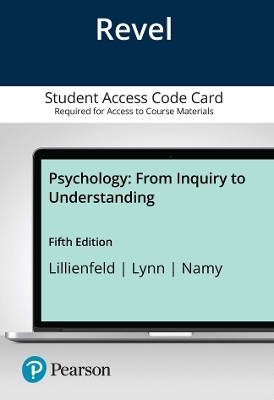
Alcohol and Drug Misuse – A Cochrane Handbook
John Wiley & Sons Inc (Hersteller)
978-1-118-45450-3 (ISBN)
- Keine Verlagsinformationen verfügbar
- Artikel merken
Iosief Abraha MD and Cristina Cusi MD are reviewers in the Cochrane Neurological Network based in Italy. They have carried out Cochrane reviews in a wide range of areas within the Cochrane review groups and specialised in reviewing drug and alcohol withdrawal treatments
Foreword, ix Preface, xi Acknowledgements, xii Part 1: Alcohol Psychosocial interventions Chapter 1: Effectiveness of brief alcohol interventions in primary care populations, 1 Chapter 2: Brief interventions for heavy alcohol users admitted to general hospital wards, 5 Chapter 3: Alcoholics Anonymous and other 12-step programmes for alcohol dependence, 8 Chapter 4: Mentoring adolescents to prevent substance use disorders, 10 Chapter 5: Universal school-based prevention programmes for alcohol misuse in young people, 12 Chapter 6: Universal multicomponent prevention programmes for alcohol misuse in young people, 15 Chapter 7: Universal family-based prevention programmes for alcohol misuse in young people, 17 Chapter 8: Social norms interventions to reduce alcohol misuse in university or college students, 19 Chapter 9: Psychosocial interventions for women enrolled in alcohol treatment during pregnancy, 22 Pharmacological interventions Chapter 10: Benzodiazepines for alcohol withdrawal, 24 Chapter 11: Anticonvulsants for alcohol withdrawal, 27 Chapter 12: Acamprosate for alcohol dependence, 31 Chapter 13: Baclofen for alcohol withdrawal, 34 Chapter 14: Gamma-hydroxybutyrate for treatment of alcohol withdrawal and prevention of relapse, 36 Chapter 15: Psychotropic analgesic nitrous oxide for alcohol withdrawal, 40 Chapter 16: Efficacy and safety of pharmacological interventions for the treatment of alcohol withdrawal, 43 Chapter 17: Opioid antagonists for alcohol dependence, 46 Chapter 18: Pharmacologic interventions for pregnant women enrolled in alcohol treatment, 49 Part 2: Drugs Psychosocial interventions Chapter 19: School-based prevention for illicit substance use disorders, 51 Chapter 20: Interventions for prevention of substance use disorders by young people delivered in non-school settings, 54 Chapter 21: Case management for persons with substance use disorders, 56 Chapter 22: Motivational interviewing for substance use disorders, 59 Chapter 23: Therapeutic communities for substance use disorders, 62 Chapter 24: Interventions for drug-using offenders in the courts, secure establishments and the community, 64 Chapter 25: Psychosocial interventions for pregnant women in outpatient illicit drug treatment programmes compared to other interventions, 67 Cocaine dependence Chapter 26 Psychosocial interventions for cocaine and psychostimulant amphetamine related disorders, 69 Chapter 27: Antidepressants for cocaine dependence, 71 Chapter 28: Antipsychotic medications for cocaine dependence, 74 Chapter 29: Anticonvulsants for cocaine dependence, 76 Chapter 30: Dopamine agonists for cocaine dependence, 78 Chapter 31: Disulfiram for the treatment of cocaine dependence, 82 Chapter 32: Efficacy of psychostimulant drugs for cocaine dependence, 84 Chapter 33: Auricular acupuncture for cocaine dependence, 87 Chapter 34: Psychosocial treatment for opiate dependence, 89 Chapter 35: Psychosocial and pharmacological treatments versus pharmacological treatments for opioid detoxification, 91 Chapter 36: Psychosocial combined with agonist maintenance treatments versus agonist maintenance treatments alone for treatment of opioid dependence, 94 Chapter 37: Alpha withdrawal, 96 Chapter 38: Buprenorphine for the management of opioid withdrawal, 99 Chapter 39: Buprenorphine maintenance versus placebo or methadone maintenance for opioid dependence, 102 Chapter 40: Methadone at tapered doses for the management of opioid withdrawal, 105 Chapter 41: Methadone maintenance at different dosages for opioid dependence, 108 Chapter 42: Methadone maintenance therapy versus no opioid replacement therapy for opioid dependence, 110 Chapter 43: Opioid antagonists under heavy sedation or anaesthesia for opioid withdrawal, 113 Chapter 44: Opioid antagonists with minimal sedation for opioid withdrawal, 115 Chapter 45: Oral naltrexone maintenance treatment for opioid dependence, 118 Chapter 46: Sustained-release naltrexone for opioid dependence, 121 Chapter 47: Heroin maintenance for chronic heroin-dependent individuals, 123 Chapter 48: LAAM maintenance versus methadone maintenance for heroin dependence, 126 Chapter 49: Detoxification treatments for opiate-dependent adolescents, 129 Chapter 50: Maintenance treatments for opiate-dependent adolescents, 131 Chapter 51: Maintenance agonist treatments for opiate-dependent pregnant women, 133 Chapter 52: Pharmacological treatment for depression during opioid agonist treatment for opioid dependence, 135 Chapter 53: Inpatient versus other settings for detoxification for opioid dependence, 138 Chapter 54: Psychotherapeutic interventions for cannabis use or dependence in outpatient settings, 140 Chapter 55: Pharmacological interventions for benzodiazepine mono-dependence management in outpatient settings, 142 Chapter 56: Treatment for amphetamine dependence, 145 Chapter 57: Treatment for amphetamine withdrawal, 147 Chapter 58: Treatment for amphetamine psychosis, 149 Chapter 59: Treatment for methaqualone dependence in adults, 151 Index, 153
| Erscheint lt. Verlag | 14.8.2012 |
|---|---|
| Verlagsort | New York |
| Sprache | englisch |
| Maße | 150 x 250 mm |
| Gewicht | 666 g |
| Themenwelt | Geisteswissenschaften ► Psychologie |
| Medizin / Pharmazie ► Medizinische Fachgebiete | |
| ISBN-10 | 1-118-45450-2 / 1118454502 |
| ISBN-13 | 978-1-118-45450-3 / 9781118454503 |
| Zustand | Neuware |
| Haben Sie eine Frage zum Produkt? |
aus dem Bereich
